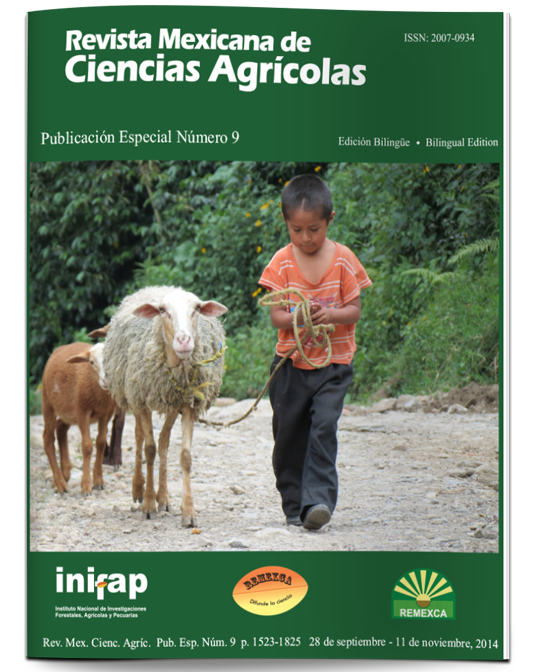Genomic sciences, soil biodiversity and landscape: interactions for sustainability
DOI:
https://doi.org/10.29312/remexca.v0i9.1063Keywords:
life sciences, molecular microbiology, omics, soil resourcesAbstract
The traditional sub-disciplines of soil science; physics, chemistry, biology, taxonomy and mineralogy have largely contributed to the establishment of the basic principles of this science and have responded numerous practical questions. Currently, they have refocused their objects of study into emerging areas in order to understand, manage and use in a better way the most complex biological community on the planet. In particular, soil biology is seen as the center of scientific research of this century, presenting novel targets and goals in their research, strongly supported by physical, chemical and taxonomic studies. In the life-sciences, genomics are applied to the study of living systems in the soil, doing an enormous progress in the understanding of these ecosystems. The characterization of various organisms in soil, especially newly discovered microorganisms, represent only the beginning of a new stage in the development of molecular soil microbiology to enable and ensure a sustainable management of the soil resource. The challenge for these disciplines is to identify communities of microorganisms and, the roles they play in their habitats that integrate the diverse landscapes on Earth. Genomics and meta-genomics, along with traditional microbiological techniques are much contributing to advances in the understanding of biodiversity that exists in the soil as a base to ensure the sustainability of the soil and landscape.
Downloads
Downloads
Published
How to Cite
Issue
Section
License
The authors who publish in Revista Mexicana de Ciencias Agrícolas accept the following conditions:
In accordance with copyright laws, Revista Mexicana de Ciencias Agrícolas recognizes and respects the authors’ moral right and ownership of property rights which will be transferred to the journal for dissemination in open access. Invariably, all the authors have to sign a letter of transfer of property rights and of originality of the article to Instituto Nacional de Investigaciones Forestales, Agrícolas y Pecuarias (INIFAP) [National Institute of Forestry, Agricultural and Livestock Research]. The author(s) must pay a fee for the reception of articles before proceeding to editorial review.
All the texts published by Revista Mexicana de Ciencias Agrícolas —with no exception— are distributed under a Creative Commons License Attribution-NonCommercial 4.0 International (CC BY-NC 4.0), which allows third parties to use the publication as long as the work’s authorship and its first publication in this journal are mentioned.
The author(s) can enter into independent and additional contractual agreements for the nonexclusive distribution of the version of the article published in Revista Mexicana de Ciencias Agrícolas (for example include it into an institutional repository or publish it in a book) as long as it is clearly and explicitly indicated that the work was published for the first time in Revista Mexicana de Ciencias Agrícolas.
For all the above, the authors shall send the Letter-transfer of Property Rights for the first publication duly filled in and signed by the author(s). This form must be sent as a PDF file to: revista_atm@yahoo.com.mx; cienciasagricola@inifap.gob.mx; remexca2017@gmail.
This work is licensed under a Creative Commons Attribution-Noncommercial 4.0 International license.



